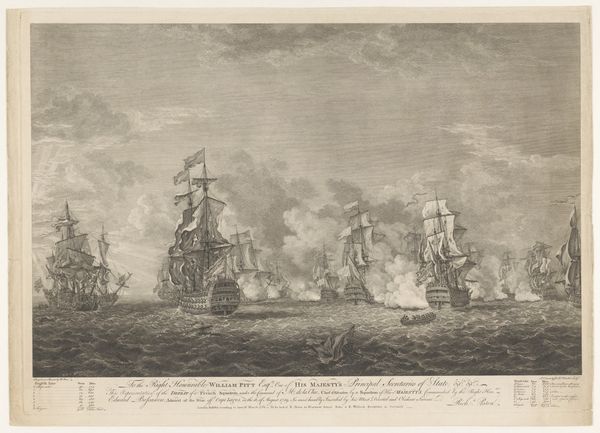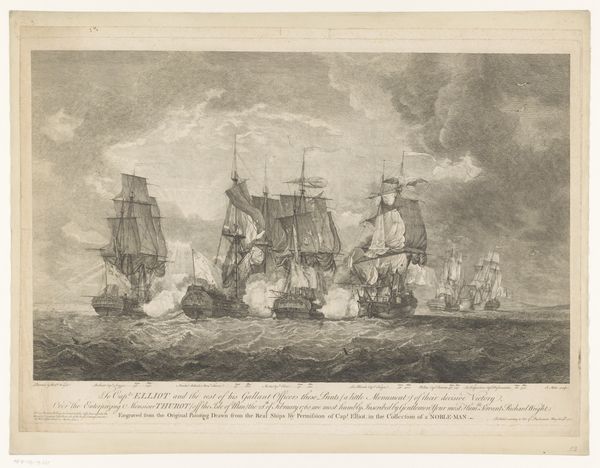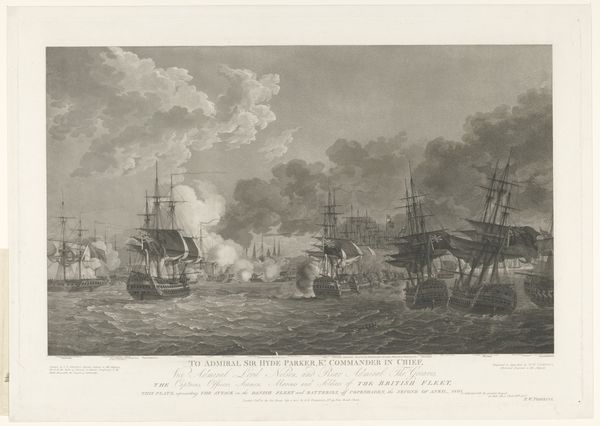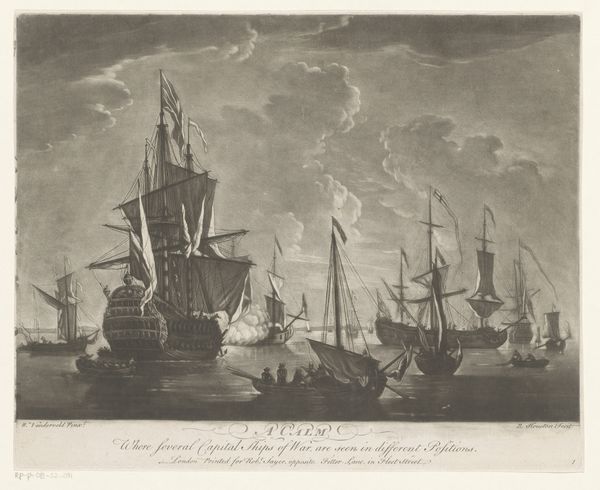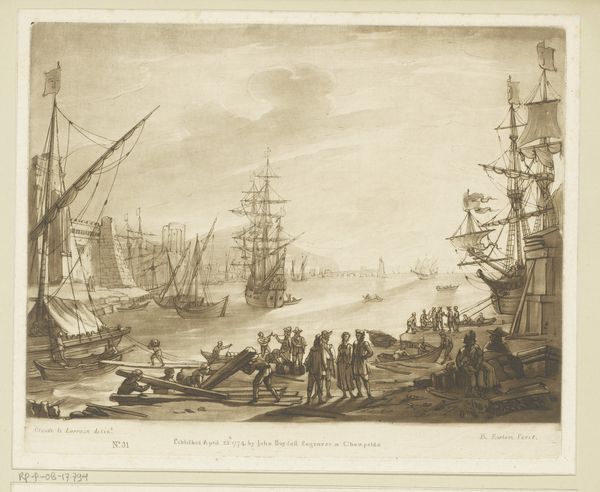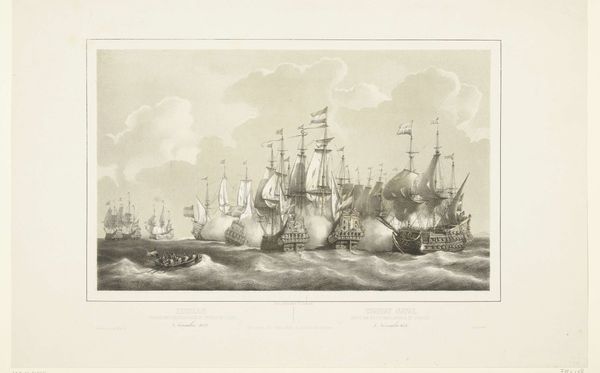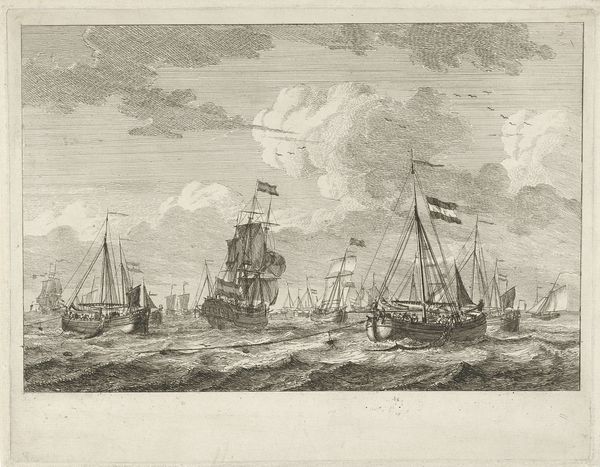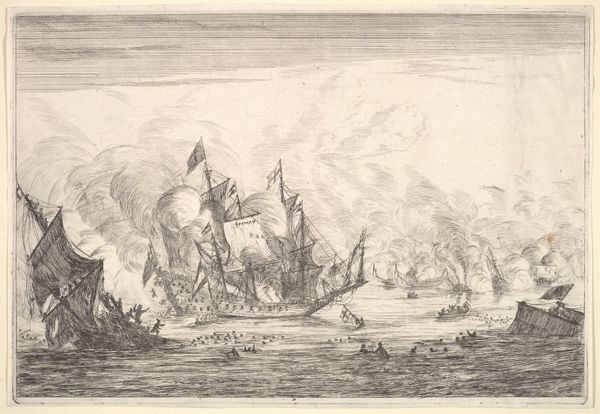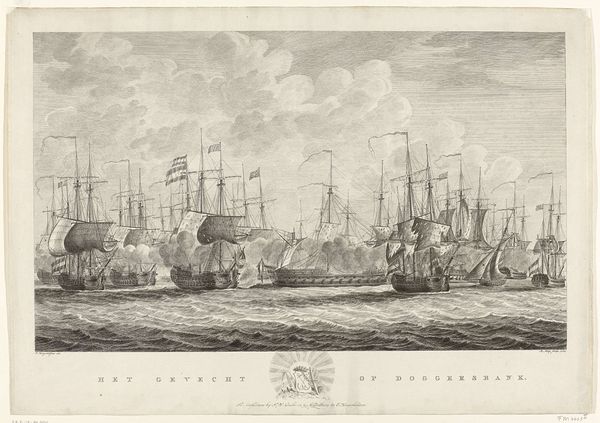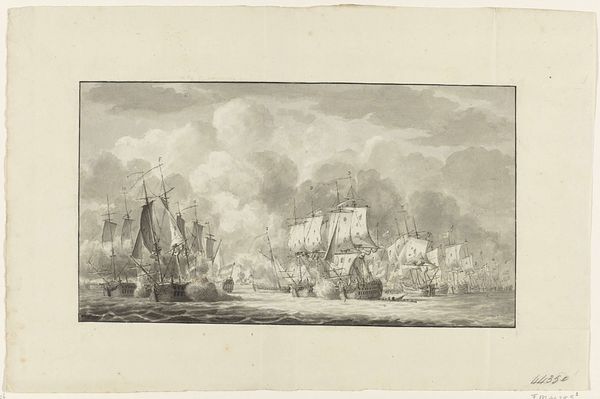
Zeeslag waarbij de Engelse vloot de Fransen verslaat op 21 oktober 1757 1759
0:00
0:00
print, engraving
#
baroque
# print
#
old engraving style
#
history-painting
#
engraving
Dimensions: height 404 mm, width 600 mm
Copyright: Rijks Museum: Open Domain
Curator: This print, crafted by Pierre Charles Canot in 1759, depicts "Zeeslag waarbij de Engelse vloot de Fransen verslaat op 21 oktober 1757," a naval battle in which the English fleet triumphed over the French. It's currently held in the Rijksmuseum. Editor: It immediately strikes me as dramatic, almost operatic. The ships, positioned against a churning sea and smoky sky, appear caught in a moment of intense conflict. There is an energy to this scene. Curator: Absolutely. Consider the era. Naval power was deeply intertwined with colonial ambitions, mercantile success, and the brutal realities of statecraft. Each ship functioned as a mobile piece of territory and economy. The battle is thus not just a clash of warships but a pivotal struggle for dominance, involving trade routes, land, and political leverage. Editor: I find the smoke from the cannons visually fascinating. It obscures, revealing at the same time. Like a visual metaphor of war and how events become obscured. How is truth shaped during this period? Curator: Precisely, consider also the symbolic weight of flags— emblems of power and nationhood displayed assertively in naval warfare. The artist pays particular attention to details on sails, hulls, and crew arrangement conveying maritime technological advancements—elements intertwined with empire-building and global trade. Editor: Beyond that, consider how ships are historically understood as containers or carriers of identity. Ships symbolize nation and movement, a conduit connecting worlds across distances. The bodies within the boats—consider the lives onboard, from those commanding down to sailors—each contributes, albeit sometimes through forced labor, towards these expansive political and financial aims. Curator: That’s very insightful. And these kinds of victories significantly influenced policy at home and abroad impacting societal stratification, legal codes governing commerce, and justifying further imperialist ambitions rooted in race, resource allocation, and national identity. The engraving then provides us with a single framed moment that continues far beyond this event. Editor: Right. In looking at it now I consider these scenes became ways through which political leaders solidified power, narratives were born. It prompts one to remember visual storytelling can normalize or excuse historical wrongs as well. Thank you.
Comments
No comments
Be the first to comment and join the conversation on the ultimate creative platform.
